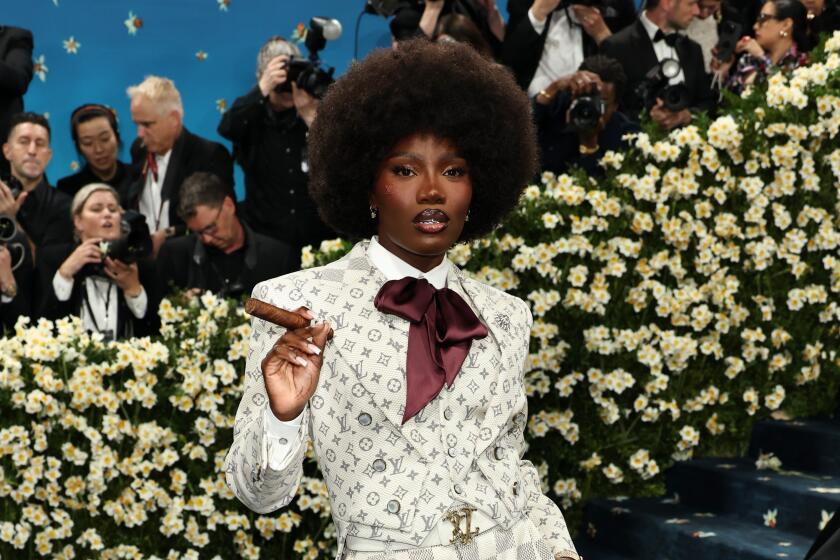JAZZ REVIEW : Coalescence of Big-Name Talent at Segerstrom Hall
- Share via
COSTA MESA — Multidirectional is the term drummer Jack DeJohnette uses to label his music. And the eclectic mix of standards, accessible originals and extended free-form excursions heard from his big-name quartet Friday at the Orange County Performing Arts Center proved how apt his term is.
In a long, two-set program, DeJohnette, pianist Herbie Hancock, bassist Dave Holland and guitarist Pat Metheny ranged across time and space. Despite muddy, reverberating sound in cavernous Segerstrom Hall (a not uncommon problem when amplified music is performed in spacious concert facilities), the evening combined impressive individual virtuosity with solid, empathetic ensemble work into a satisfying, well-varied program.
The fact that this assemblage of all-stars worked so well as a unit was one of the evening’s surprises. There were no extended, unaccompanied solos that saw the other musicians desert the stage while an ego was indulged. Instead, the band remained together, trading lines, sharing the lead duties and reinforcing each others’ work with intelligent accompaniment. This is one superstar quartet where the emphasis is on the group rather than the stars.
With the exception of Metheny, each of the unit’s members has experience playing for Miles Davis, so it was appropriate that the group opened with “Solar,” a Davis tune first recorded in the early ‘50s. This melodic reference to a bit of shared history featured Hancock’s wily acoustic solo, DeJohnette’s touch-conscious percussion and--though it was difficult to hear in the mix--crisp, responsive groundwork from Holland on upright acoustic.
Contrast “Solar” with the contemporary-sounding Metheny-DeJohnette collaboration “Nine Over Reggae,” which appears on the group’s recent release, “Parallel Realities.” Holland switched to electric bass (something he’s ignored for the last 15 years), Metheny coaxed glossy synthesized tones from one of an array of guitars he used, and Hancock moved to electric keyboards, where he added color as well as rhythmic interest from programmed sounds. Despite its easy-to-follow beat (which had little to do with actual reggae), the tune was a showcase for DeJohnette, who provided an endless stream of embellishments and offbeat accents to keep things interesting.
Different still was DeJohnette’s “Silver Hollow” (from his 1978 “New Directions” recording), a smooth, pastoral piece that opened with a sweet acoustic solo from Metheny. DeJohnette’s mallet work and delicate tracking of the rhythm with subdued hi-hat claps made for a marvel of tasteful reserve.
The evening’s high points, though, were two extended, seemingly free-form pieces that worked a variety of tempos and high-pitched emotions, combining sounds that ranged from thunderous electronic effects to a ringing telephone.
One of these adventurous efforts, the title track from the new album, featured Metheny’s screaming-yet-melodic synthesizer solo over DeJohnette’s breakneck tom-tom rolls, while Hancock added muted trumpet tones from his synthesizer that recalled (who else?) Miles Davis. The music was accompanied by an unnerving light show that must have brought back the Summer of Love and nights at the Filmore to more than a few in the audience.
Adding to the variety of the program was Hancock’s “Eye of the Hurricane,” which featured the pianist’s appropriately stormy improvisation; a Latin-tinged rendition of Ornette Coleman’s “The Good Life”; and, as an encore, Hancock’s funky “Cantaloupe Island.”
More to Read
The biggest entertainment stories
Get our big stories about Hollywood, film, television, music, arts, culture and more right in your inbox as soon as they publish.
You may occasionally receive promotional content from the Los Angeles Times.










